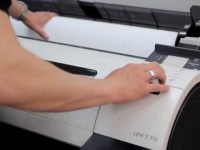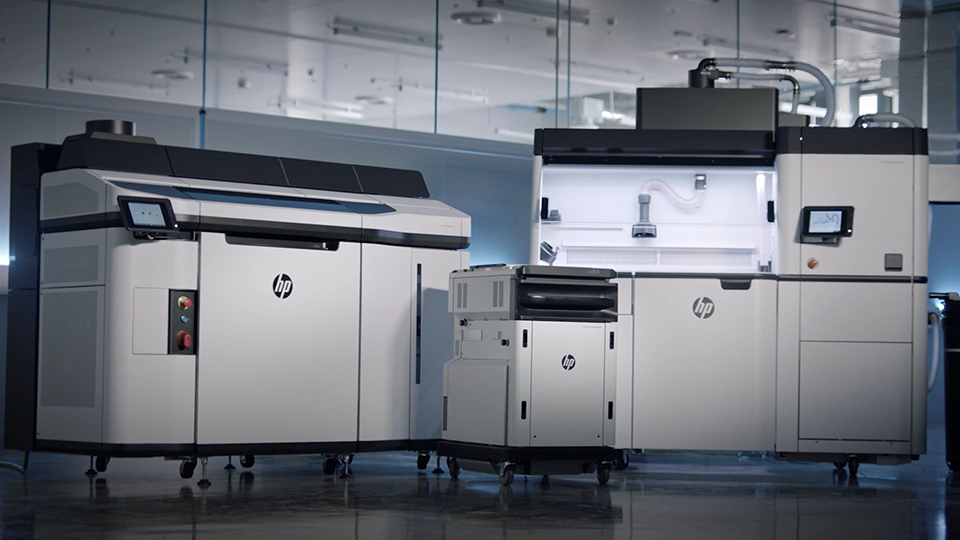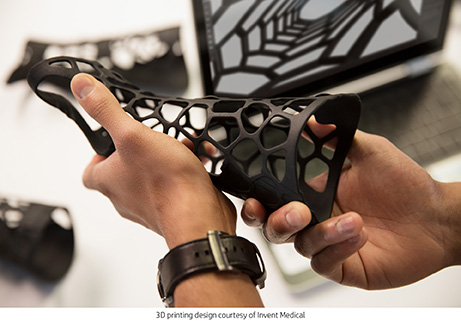 1) Print Head(s). This probably accounts for the highest number of service calls we get for wide format inkjet printers (plotters). Older printers used several, multi-color print heads. Current technology either uses a single-unit print head or 3 or more universal-color print heads.
1) Print Head(s). This probably accounts for the highest number of service calls we get for wide format inkjet printers (plotters). Older printers used several, multi-color print heads. Current technology either uses a single-unit print head or 3 or more universal-color print heads.
The control panel on your printer will either display an error code or notification that a print head needs replacing.
This catches most people off-guard because the price of a single-unit print head is typically between $350 – $500 and is mistakenly thought of as a serious printer problem. Which it is, if you just replaced one and are getting an error code again. Otherwise, they typically last at least a year or more for low volume printing. Think of print heads as just a consumable item like ink or paper. Budget for replacement. If you have a managed service plan, make sure they’re included in the plan.
2) Paper Handling. There are still a number of older inkjet plotters in use that drop their curled-up prints in a basket under the printer. If you’re printing more than a few sheets, this can turn into a real mess in a short time. It may also cause a printer jam if the prints get too backed up in the basket.
Until recently, only production, toner-based printers provided a way to keep prints flat and organized. A top delivery unit or high capacity stacker was either standard or optional for production printers.
Both Canon and HP have strived to solve this problem on inkjet-based printers. Canon has been able to make a catch-basket that can be configured to keep about 20 prints stacked flat.
HP has mastered this for their T-series workgroup plotters. They engineered a top delivery unit that comes standard and keeps up to 100 sheets flat and organized. There’s even a tension rack that hold them in place.
Also, of note, most older printers only hold 150-foot rolls of inkjet paper. The paper on 150-foot rolls have more of a curl. Newer technology can hold 300-foot rolls of inkjet media, or, in some cases, 500-foot rolls of plain paper. Plain paper is easier to handle and costs considerably less than coated inkjet paper.
3) Adjusting Page Size. Changing your page size from one size to another can be cumbersome if you’re using something like the free version of Adobe Acrobat for your wide format printing. Acrobat is geared towards letter-size printing. Most times, you have to waste several prints before you can figure out the exact settings to use when printing PDF files with Acrobat.
This process is frustrating, a loss of productivity and can become costly depending on how much media is wasted.
If you’re a designer or estimator that works almost exclusively with PDF files, you would be doing yourself a world of good to invest in Bluebeam software. It’s both inexpensive and the best tool for PDF workflows. The print settings not only make resizing easy, they also have great options for batch printing and flattening PDFs to make sure they’re print-ready.
Otherwise, printer manufactures like HP and Canon provide software to make PDF printing easier. HP Click, for example, is a free download for HP Z-series and T-series printers. With HP Click, you can drag-n-drop PDFs to create a collated set of plans for printing. The software checks for PDF errors. You can easily resize and get a true visual of how the document will look when printed.
4) Slow Print Times. When we discuss speed, there are two categories to understand; first page out and mechanical print speed.
First page out is determined by how much time it takes to process the file, either on your computer or at the printer. Complex files and slow processors can cause wait times as long as several minutes before printing starts. As design files continue to be more complex, an older printer not only takes a long time to process, but the risk of loosing valuable design data increases. Construction plans or machine assemble plans with errors = loss of productivity and money.
Mechanical print speed is typically rated by how many seconds or minutes it takes per print. For example, most of today’s inkjet plotters can produce a D-size or A1-size print in less than 25 seconds. That’s about 2.5 prints per minute. Not bad considering most printers older than 10 years can barely produce 1 print per minute.
Keep in mind, production printers, such as HP PageWide XL, can produce up to 30 D-size prints per minute.
When evaluating low volume workgroup or entry-level printers, consider the physical memory or processing memory a printer has. The hard drive has very little to do with processing files. Understanding the architecture of the actual processor can be like reading a foreign language to some. Just know that, as with PCs, the internal processor gets a huge bump in power every few years.
HP takes an extra step in processing power by adding the Adobe PDF Print Engine to their workgroup and production printers. The PDF Print Engine relieves the burden of processing complex files from your computer, and at the same time, protects the integrity of the your PDF design data.
5) Reliability. Printers can be critical business tools. Many people wish the plotter they bought 10 years ago will continue to serve their needs for another 10. Are you one of those that thinks this is actually possible but don’t even have a service plan in place?
Printers are machines. Machines have components that wear out or break.
A plotter costing less than $3000 is considered entry-level and will probably be very reliable if you only have one person printing a few times throughout the day. On the other hand, if you deploy this entry level printer into a workgroup setting, you can expect problems to develop. Problems lead to downtime. And, that can be costly and frustrating.
Work with your printer partner to determine which class of printer will meet your printing workflow now – and in the near future. Seriously consider budgeting for extending the warranty or have your printer partner setup an annual service plan. In most cases, the price you pay for an annual service plan is less than couple of T&M repairs.
In my 25+ years of experience, the biggest source of frustration I’ve observed is when a customer’s plotter breaks down, and without a service plan in place, has to get funds approved for repairs.
Service issues can sometimes be the fault of the consumables. Use genuine ink from the printer manufacturer. Check the expiration date on you ink cartridge when you purchase it. Some places sell inexpensive ink because it’s sitting on their shelf nearing the expiration date. Make the paper is good quality and the correct type of media for your application.
Print Away!
jff






